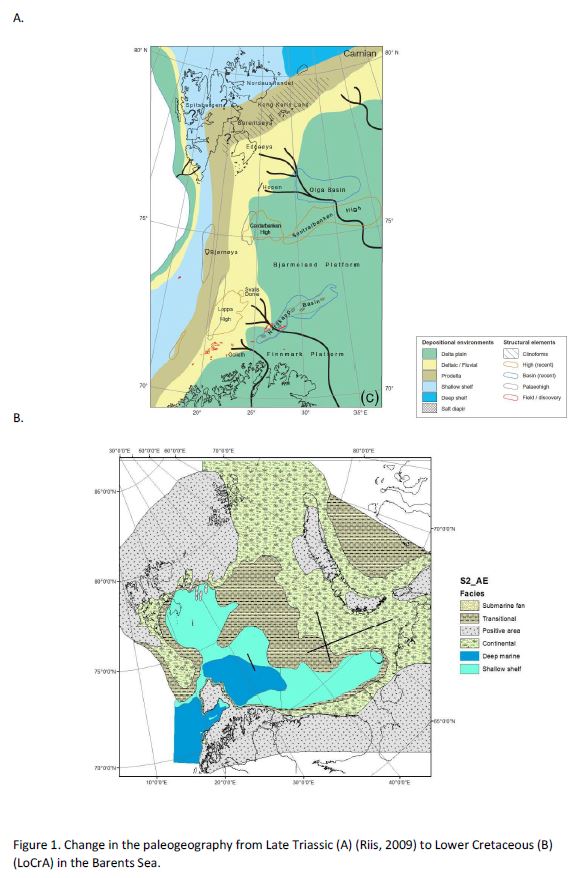A two-year project, Jurassic-Lower Cretaceous basinal studies of the Arctic region (JuLoCrA; January 2017 – December 2018), led by the University of Stavanger and University Center in Svalbard, aims to continue and expand research activities from the Lower Cretaceous basin studies in the Arctic (LoCrA) consortium (2012-2016). The project will continue research in the Lower Cretaceous interval and expand into the Upper Jurassic interval to provide a better understanding of the paleogeography and a fully-integrated, surface and subsurface synthesis of on- and off- shore areas. The Jurassic is one of the most prolific intervals in the Barents and Kara Seas regions with several discoveries in recent years (e.g. Johan Carlsberg, Wisting, Universitetskaya); however, the depositional setting is poorly understood. The Jurassic represents a relatively thin transition from the sand-rich and thick Triassic shallow marine to continental environments sourced from the Urals and northern Norway to the thick, mud-rich Lower Cretaceous, prograding marine-dominated environments sourced from large continental areas in the north and more localized intra-basinal highs. In addition to good quality shallow-marine and transitional reservoir rocks, the Jurassic contains one of the richest source rocks in the region (Hekkingen Fm.). LoCrA studies show that many geological processes are closely linked to Middle and Late Jurassic events (e.g. initiation of extensional basins). A study integrating basin evolution with a common on- and off- shore sequence stratigraphic framework that leads to a better understanding of the paleogeography and the relationship of the Lower Cretaceous to the Upper Jurassic for the entire Barents Sea region is lacking (Figure 1).



